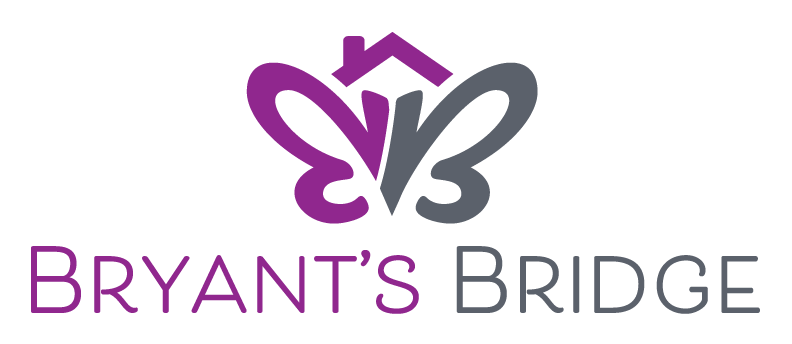Housing First
Bryant's Bridge follows a housing first model.
We believe this is the best way to get someone the tools they need to succeed.
Core principles of Housing First:
- Immediate access to permanent housing with no housing readiness requirements.
- Consumer choice and self-determination.
- Recovery orientation.
- Individualized and client-driven supports.
- Social and community integration.
Are you in need of housing?
Requirements
- Age 17-24
- If 17, must be emancipated


Immediate access to permanent housing with no housing readiness requirements.
Housing First involves providing clients with assistance in finding and obtaining safe, secure, and permanent housing as quickly as possible. The key to the Housing First philosophy is that individuals are not required to demonstrate that they are ‘ready’ for housing. Housing is not conditional on sobriety or abstinence. Program participation is also voluntary. This approach runs in contrast to what has been the orthodoxy of ‘treatment first’ approaches whereby people experiencing homeless are placed in emergency services and must address specific personal issues (addictions, mental health) before being deemed ‘ready’ for housing (having received access to health care or treatment).
Consumer choice and self-determination.
Housing First is a rights-based, client-centered approach that emphasizes client choice in terms of housing and supports.
- Housing – Clients can exercise some choice regarding the location and type of accommodation they receive (e.g., neighborhood, congregate setting, scattered site, etc.). The selection may be constrained by local availability and affordability.
- Supports – Clients have choices in terms of what services they receive and when to start using services.
Recovery orientation.
Housing First practice is not simply focused on meeting basic client needs but on supporting recovery. A recovery orientation focuses on individual well-being and ensures that clients have access to a range of supports that enable them to nurture and maintain social, recreational, educational, occupational, and vocational activities.
For those with addiction challenges, a recovery orientation also means access to a harm reduction environment. Harm reduction aims to reduce the risks and harmful effects of substance use and addictive behaviors for the individual, the community, and society as a whole, without requiring abstinence. However, as part of the spectrum of choices that underlies both Housing First and harm reduction, people may desire and choose ‘abstinence-only’ housing.
Individualized and client-driven supports.
A client-driven approach recognizes that individuals are unique, and so are their needs. Once housed, some people will need minimum supports while other people will need supports for the rest of their lives (this could range from case management to assertive community treatment). Individuals are provided with “a range of treatment and support services that are voluntary, individualized, culturally-appropriate, and portable (e.g., in mental health, substance use, physical health, employment, education)” (Goering et al., 2012:12).
Income supports and rent supplements are often an important part of providing client-driven supports. If clients do not have the necessary income to support their housing, their tenancy, health, and well-being may be at risk. Rent supplements should ensure that individuals do not pay more than 30% of their income on rent.
Social and community integration.
Part of the Housing First strategy is to help people integrate into their community, and this requires socially supportive engagement and the opportunity to participate in meaningful activities. If people are housed and become or remain socially isolated, their housing stability may be compromised.

Step 1
Immediate access to permanent housing with no housing readiness requirements.
Housing First involves providing clients with assistance in finding and obtaining safe, secure, and permanent housing as quickly as possible. The key to the Housing First philosophy is that individuals are not required to demonstrate that they are ‘ready’ for housing. Housing is not conditional on sobriety or abstinence. Program participation is also voluntary. This approach runs in contrast to what has been the orthodoxy of ‘treatment first’ approaches whereby people experiencing homeless are placed in emergency services and must address specific personal issues (addictions, mental health) before being deemed ‘ready’ for housing (having received access to health care or treatment).
Step 2
Consumer choice and self-determination.
Housing First is a rights-based, client-centered approach that emphasizes client choice in terms of housing and supports.
- Housing – Clients can exercise some choice regarding the location and type of accommodation they receive (e.g., neighborhood, congregate setting, scattered site, etc.). The selection may be constrained by local availability and affordability.
- Supports – Clients have choices in terms of what services they receive and when to start using services.
Step 3
Recovery orientation.
Housing First practice is not simply focused on meeting basic client needs but on supporting recovery. A recovery orientation focuses on individual well-being and ensures that clients have access to a range of supports that enable them to nurture and maintain social, recreational, educational, occupational, and vocational activities.
For those with addiction challenges, a recovery orientation also means access to a harm reduction environment. Harm reduction aims to reduce the risks and harmful effects of substance use and addictive behaviors for the individual, the community, and society as a whole, without requiring abstinence. However, as part of the spectrum of choices that underlies both Housing First and harm reduction, people may desire and choose ‘abstinence-only’ housing.
Step 4
Individualized and client-driven supports.
A client-driven approach recognizes that individuals are unique, and so are their needs. Once housed, some people will need minimum supports while other people will need supports for the rest of their lives (this could range from case management to assertive community treatment). Individuals are provided with “a range of treatment and support services that are voluntary, individualized, culturally-appropriate, and portable (e.g., in mental health, substance use, physical health, employment, education)” (Goering et al., 2012:12).
Income supports and rent supplements are often an important part of providing client-driven supports. If clients do not have the necessary income to support their housing, their tenancy, health, and well-being may be at risk. Rent supplements should ensure that individuals do not pay more than 30% of their income on rent.
Step 5
Social and community integration.
Part of the Housing First strategy is to help people integrate into their community, and this requires socially supportive engagement and the opportunity to participate in meaningful activities. If people are housed and become or remain socially isolated, their housing stability may be compromised.
Are you in need of housing?
Requirements
- Age 17-24
- If 17, must be emancipated

